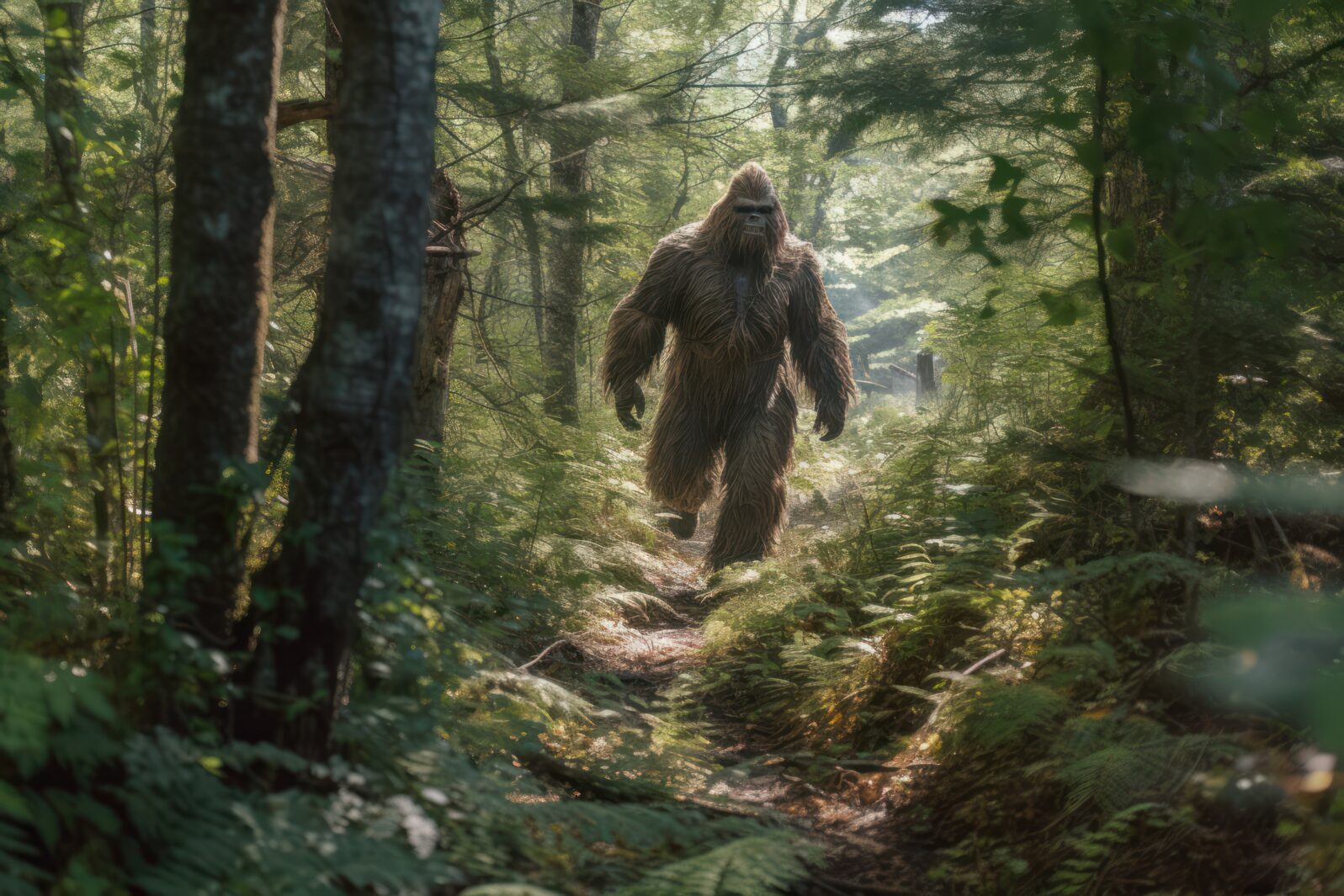Bigfoot and Trust in Science: A Cautionary Tale
Of three men searching for Bigfoot in 1969 — a hunting guide, an enthusiast, and a physical anthropologist, which seemed surest that the monster was real?At Sapiens, Kenyon College anthropologist Bruce Hardy offers an entertaining — but also instructive — look at the hunt for the legendary North American primate Bigfoot (also called Sasquatch) in the mid-twentieth century. Here’s a famous alleged Bigfoot sighting from 1967:
In 1969, the hunt converged on a small town in Washington State, near the Canadian border, called Bossburg. Now a ghost town, in that year it hosted many prominent Bigfoot hunters, checking out tracks spotted at the city dump. Hardy focuses on three of these seekers, and in particular on where beliefs in Bigfoot took them:
One was Illinois-born hunting guide Ivan Marx (1999–2021), who had a knack for coming up with evidence of Bigfoot; he was the one who found the tracks at the dump. Another was Swiss Canadian René Dahinden (1930–2001) , a man who worked only to raise funds to continue his hunt for the monstrous primate.
Fortunately, there was a scientist in the room …
And the third was University of Washington physical anthropologist Grover Krantz (1931–2002). We are told that “Throughout his professional career, Krantz authored more than 60 academic articles and 10 books on human evolution, and conducted field research in Europe, China, and Java.” (Wikipedia) So he must have lent a lot of prestige to the search for Bigfoot. He might also have been expected to provide a much-needed measure of skepticism.
But here’s what happened: Viewing some of the few tracks that had not been melted or trampled before he arrived, he noted that it looked as though the right foot was injured; thus they became known as the Cripple Foot tracks. In his view,
“If someone faked [these footprints] with all the subtle hints of anatomy design, he had to be a real genius, an expert at anatomy, very inventive, an original thinker. He had to outclass me in those areas, and I don’t think anyone outclasses me in those areas, at least not since Leonardo da Vinci. So, I say such a person is impossible, therefore the tracks are real.”
Bruce Hardy, What Bigfoot teaches us about public mistrust of science, Sapiens, June 13, 2023
And when Marx came up with yet another find…
A few weeks later, Marx claimed to have filmed the creature. When others viewed the video, some thought it was obviously faked. Evidence surfaced that Marx had recently bought scraps of fur in a neighboring town. Dahinden strongly suspected that Marx also hoaxed the Cripple Foot tracks. But Krantz refused to accept that they were not real.
Hardy, What Bigfoot teaches us, Sapiens, June 13, 2023
Here’s Marx’s film:
If life were the movies, we might have seen more caution from the only scientist of the three. But for Krantz, Bigfoot was an unshakeable belief. Here’s something that people outside a narrow group in his specialty simply would not know about him:
Krantz’s interest in Bigfoot was a touchy subject for the anthropology department at Washington State, which, according to Krantz, was why he was always turned down for promotions and grants. But Donald Tyler, a former student of Krantz’s and a professor of anthropology and sociology at the University of Idaho, said it was more nuanced than that.
“The basic reason why some of the faculty didn’t support him for full professor was not so much because of Bigfoot, but because he stayed with it when his evidence never got any better,” Tyler said. It was also common knowledge that Krantz fell prey to hoaxes.
Krissy Eliot, “The Man, The Myth, and The Legend of Grover Krantz,” California, June 19, 2018
Tyler himself succeeded in deceiving Krantz, as Eliot goes on to relate. But that had little impact on Krantz’s convictions.
About Marx and Dahinden in later life: We are told at the movie database IMDB that “Although widely derided as a fraud by many Sasquatch experts, Ivan [Marx] always insisted that his movies and photographs of Bigfoot were real.” At the same time, we learn from Hardy and from Dahinden’s obituary that he struggled with doubts.
Hardy points out that, from an ecology perspective, one reason for doubting the existence of Bigfoot is that no one has ever found droppings, bones, roadkill, or other remains — the sort of things we might expect to see even if we never saw a live Bigfoot.
Reflections on trust in science
Hardy asks, “What does this episode tell us about the public mistrust of science?”
Done properly, science is self-correcting. However, the scientific process can break down if individual scientists see themselves, rather than the evidence, as the source of authority. Then, the evidence becomes secondary—or worse, unimportant.
In the Cripple Foot case, Krantz’s estimation of his own intelligence, at least on par with that of da Vinci, blinded him to the evidence that was before him. He believed that his knowledge was so specialized and detailed that it was beyond the capacity of others to understand.
Hardy, What Bigfoot teaches us, Sapiens, June 13, 2023
So it turns out that fruitful science depends in part upon character as well as intelligence and training. A dose of humility seldom goes unrewarded. In any event, appeals for public trust in science will fall on deaf ears if scientists are arrogant, easily deceived or otherwise untrustworthy.
You may also wish to read: Scientists attempt an honest look at why we trust science less now. Contemplating the depressing results of a recent Pew survey, a molecular biologist and a statistician take aim at growing corruption in science. The article, unfortunately, doesn’t address the way the panic around COVID leaned heavily on claims about “the science” — which likely discredited science.
